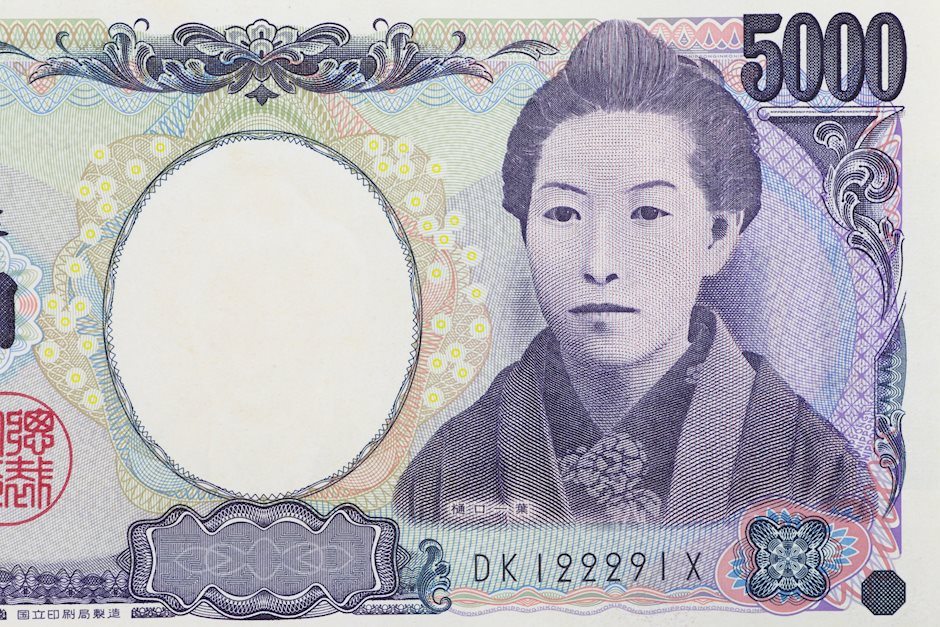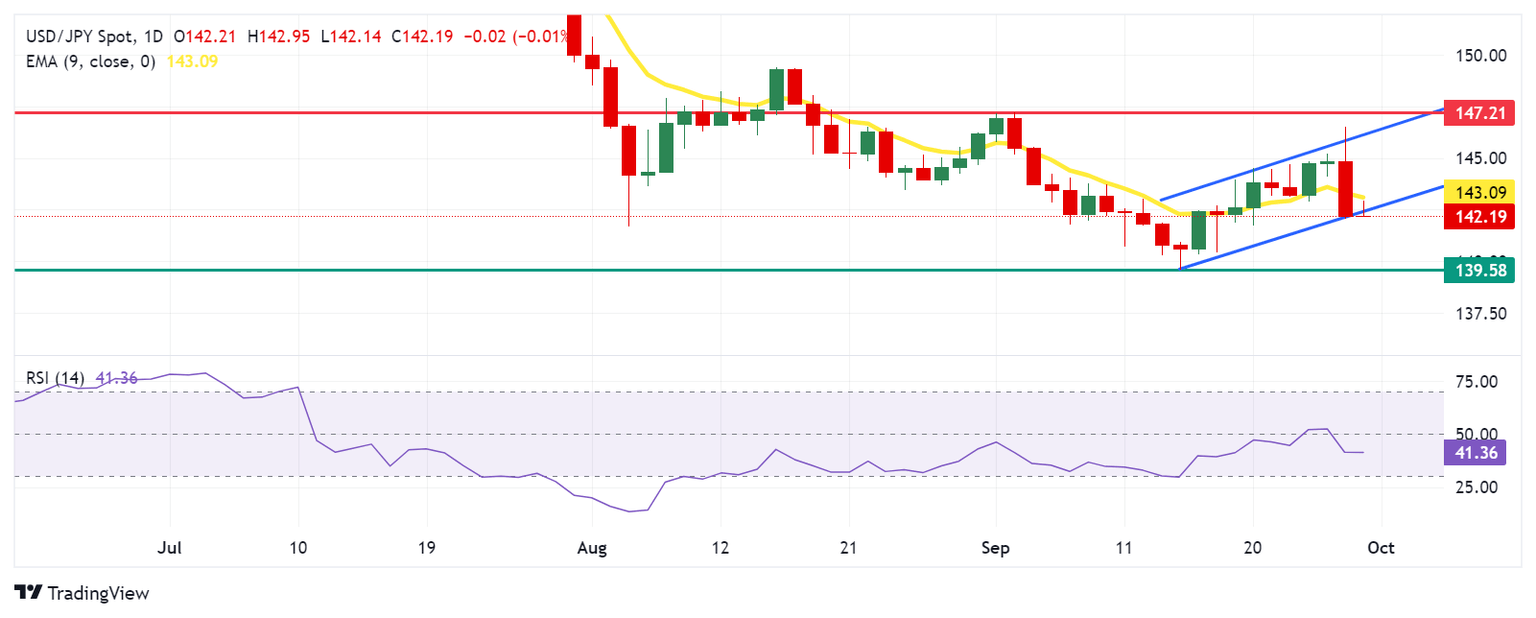Japanese Yen depreciates despite a subdued US Dollar ahead of Fed Powell's speech
- The Japanese Yen struggles as upcoming PM Shigeru Ishiba says that the monetary policy should continue to be accommodative.
- Japan's Retail Trade rose by 2.8% YoY in August, surpassing the expected 2.3% rise.
- August’s US Core PCE Price Index MoM has reinforced the possibility of an aggressive Fed rate-cutting cycle.

The Japanese Yen (JPY) edges lower against the US Dollar (USD) on Monday, following the dovish comments from Japan's upcoming Prime Minister, former Defense Chief Shigeru Ishiba. Ishiba stated on Sunday that the country's monetary policy should continue to be accommodative, indicating the necessity of maintaining low borrowing costs to support a fragile economic recovery, according to The Japan Times.
Japan's Retail Trade increased by 2.8% year-on-year in August, surpassing market expectations of 2.3% and slightly exceeding the upwardly revised 2.7% rise from the previous month. On a month-over-month basis, seasonally adjusted Retail Trade rose by 0.8%, marking the largest increase in three months, following a 0.2% gain in July.
The US Dollar received downward pressure following Friday’s US Core Personal Consumption Expenditures (PCE) Price Index data for August, which aligns with the US Federal Reserve's (Fed) inflation outlook. This has reinforced the possibility of an aggressive rate-cutting cycle by the central bank.
The CME FedWatch Tool indicates that markets are assigning a 42.9% probability to a 25 basis point rate cut by the Federal Reserve in November, while the likelihood of a 50-basis-point increased to 57.1%, up from 50.4% a week ago.
Traders will likely focus on Fed Chair Jerome Powell’s speech on Monday.
Daily Digest Market Movers: Japanese Yen receives downward pressure from doubts over BoJ policy outlook
- Japan's Chief Cabinet Secretary, Yoshimasa Hayashi, refrained from commenting on Monday's daily stock market fluctuations. Hayashi emphasized the importance of closely monitoring the economic and financial situation both domestically and internationally with a sense of urgency. He also noted the need for ongoing collaboration with the Bank of Japan.
- St. Louis Federal Reserve President Alberto Musalem stated on Friday, according to the Financial Times, that the Fed should begin cutting interest rates "gradually" following a larger-than-usual half-point reduction at the September meeting. Musalem acknowledged the possibility of the economy weakening more than anticipated, saying, "If that were the case, then a faster pace of rate reductions might be appropriate."
- The US Core Personal Consumption Expenditures (PCE) Price Index for August increased by 0.1% month-over-month, falling short of market expectations of a 0.2% rise and lower than the previous 0.2% increase. Meanwhile, the Core PCE on a year-over-year basis rose by 2.7%, matching expectations and slightly above the prior reading of 2.6%.
- The Tokyo Consumer Price Index (CPI) increased 2.2% year-over-year in September, down from a 2.6% rise in August. Meanwhile, the CPI excluding fresh food and energy climbed 1.6% YoY in September, unchanged from the previous reading. The CPI excluding fresh food increased 2.0% as expected, compared to the previous rise of 2.4%.
- US Gross Domestic Product Annualized increased at a rate of 3.0% in the second quarter, as previously estimated, according to the US Bureau of Economic Analysis (BEA) on Thursday. Meanwhile, the GDP Price Index rose 2.5% in the second quarter.
- On Thursday, the BoJ Monetary Policy Meeting Minutes expressed the members’ consensus on the importance of remaining vigilant regarding the risks of inflation exceeding targets. Several members indicated that raising rates to 0.25% would be suitable as a way to adjust the level of monetary support. A few others suggested that a moderate adjustment to monetary support would also be appropriate.
- Last week, BoJ Governor Kazuo Ueda indicated that the central bank has time to evaluate market and economic conditions before making any policy adjustments, signaling that there is no urgency to raise interest rates again. Ueda also noted that Japan's real interest rate remains deeply negative, which is helping to stimulate the economy and drive up prices.
Technical Analysis: USD/JPY remains above 142.00 after breaking below the ascending channel
USD/JPY trades around 142.20 on Monday. Analysis of the daily chart indicates that the pair has broken below the ascending channel pattern, signaling a momentum shift from a bullish to a bearish bias. Furthermore, the 14-day Relative Strength Index (RSI) is situated below the 50 level, indicating a bearish sentiment is in play.
In terms of support, the USD/JPY pair may navigate around the 139.58 region, the lowest point since June 2023.
On the upside, a return to the ascending channel could weaken the bearish case and lead the USD/JPY pair to test the nine-day Exponential Moving Average (EMA) at the 143.10 level. A break above this level could support the pair to test the upper boundary of the ascending channel at 146.20 level, followed by its five-week high of 147.21 level, which was recorded on September 3.
USD/JPY: Daily Chart
Japanese Yen PRICE Today
The table below shows the percentage change of Japanese Yen (JPY) against listed major currencies today. Japanese Yen was the weakest against the British Pound.
| USD | EUR | GBP | JPY | CAD | AUD | NZD | CHF | |
|---|---|---|---|---|---|---|---|---|
| USD | -0.37% | -0.33% | 0.17% | 0.04% | -0.34% | -0.35% | 0.21% | |
| EUR | 0.37% | 0.05% | 0.54% | 0.44% | 0.08% | 0.04% | 0.69% | |
| GBP | 0.33% | -0.05% | 0.63% | 0.38% | 0.03% | -0.01% | 0.60% | |
| JPY | -0.17% | -0.54% | -0.63% | -0.09% | -0.59% | -0.51% | 0.08% | |
| CAD | -0.04% | -0.44% | -0.38% | 0.09% | -0.33% | -0.39% | 0.22% | |
| AUD | 0.34% | -0.08% | -0.03% | 0.59% | 0.33% | -0.03% | 0.58% | |
| NZD | 0.35% | -0.04% | 0.01% | 0.51% | 0.39% | 0.03% | 0.59% | |
| CHF | -0.21% | -0.69% | -0.60% | -0.08% | -0.22% | -0.58% | -0.59% |
The heat map shows percentage changes of major currencies against each other. The base currency is picked from the left column, while the quote currency is picked from the top row. For example, if you pick the Japanese Yen from the left column and move along the horizontal line to the US Dollar, the percentage change displayed in the box will represent JPY (base)/USD (quote).
Central banks FAQs
Central Banks have a key mandate which is making sure that there is price stability in a country or region. Economies are constantly facing inflation or deflation when prices for certain goods and services are fluctuating. Constant rising prices for the same goods means inflation, constant lowered prices for the same goods means deflation. It is the task of the central bank to keep the demand in line by tweaking its policy rate. For the biggest central banks like the US Federal Reserve (Fed), the European Central Bank (ECB) or the Bank of England (BoE), the mandate is to keep inflation close to 2%.
A central bank has one important tool at its disposal to get inflation higher or lower, and that is by tweaking its benchmark policy rate, commonly known as interest rate. On pre-communicated moments, the central bank will issue a statement with its policy rate and provide additional reasoning on why it is either remaining or changing (cutting or hiking) it. Local banks will adjust their savings and lending rates accordingly, which in turn will make it either harder or easier for people to earn on their savings or for companies to take out loans and make investments in their businesses. When the central bank hikes interest rates substantially, this is called monetary tightening. When it is cutting its benchmark rate, it is called monetary easing.
A central bank is often politically independent. Members of the central bank policy board are passing through a series of panels and hearings before being appointed to a policy board seat. Each member in that board often has a certain conviction on how the central bank should control inflation and the subsequent monetary policy. Members that want a very loose monetary policy, with low rates and cheap lending, to boost the economy substantially while being content to see inflation slightly above 2%, are called ‘doves’. Members that rather want to see higher rates to reward savings and want to keep a lit on inflation at all time are called ‘hawks’ and will not rest until inflation is at or just below 2%.
Normally, there is a chairman or president who leads each meeting, needs to create a consensus between the hawks or doves and has his or her final say when it would come down to a vote split to avoid a 50-50 tie on whether the current policy should be adjusted. The chairman will deliver speeches which often can be followed live, where the current monetary stance and outlook is being communicated. A central bank will try to push forward its monetary policy without triggering violent swings in rates, equities, or its currency. All members of the central bank will channel their stance toward the markets in advance of a policy meeting event. A few days before a policy meeting takes place until the new policy has been communicated, members are forbidden to talk publicly. This is called the blackout period.
Author

Akhtar Faruqui
FXStreet
Akhtar Faruqui is a Forex Analyst based in New Delhi, India. With a keen eye for market trends and a passion for dissecting complex financial dynamics, he is dedicated to delivering accurate and insightful Forex news and analysis.

















